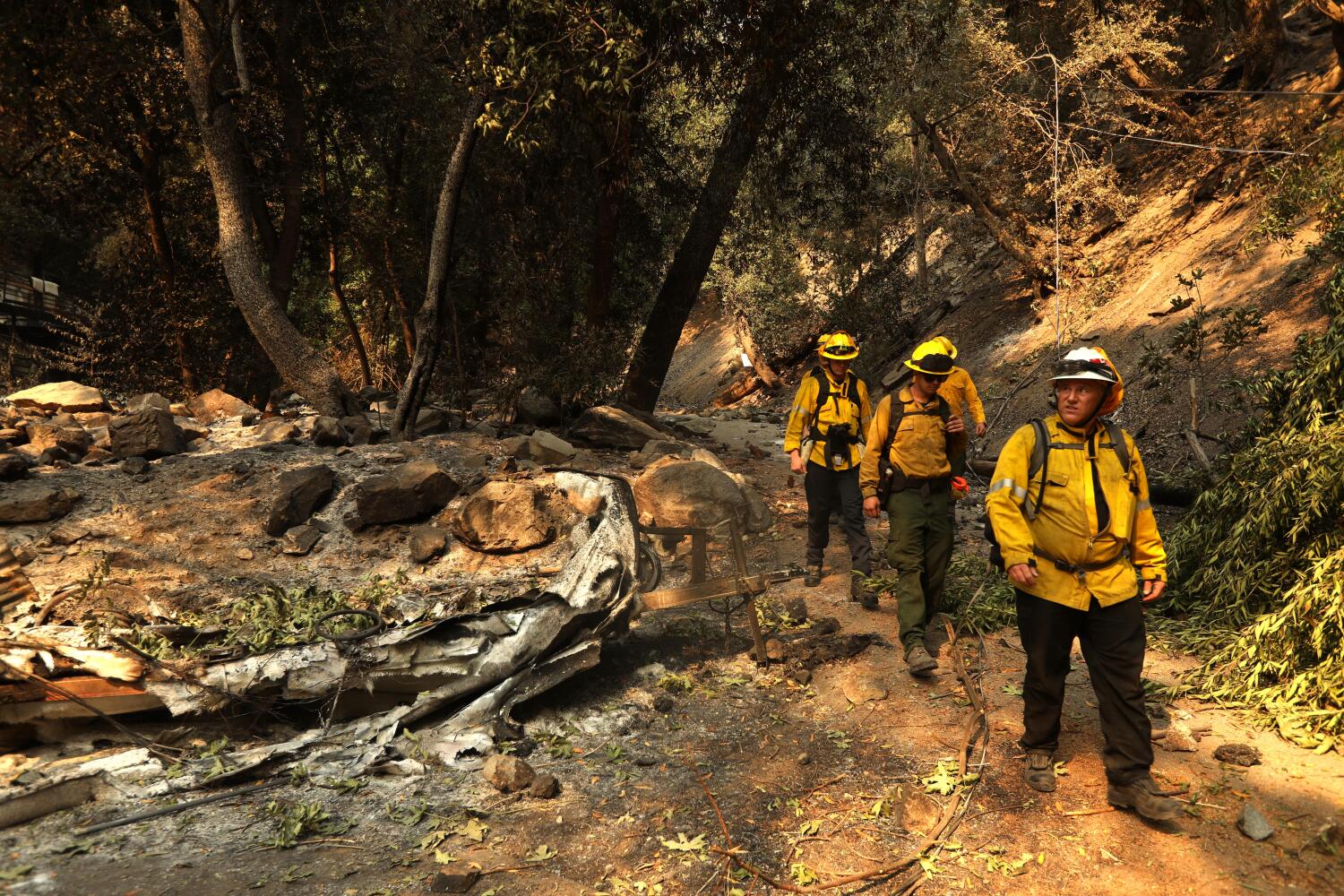

Amid a record heat wave, firefighters in Southern California struggled last week to contain three large wildfires that have burned more than 100,000 acres.
The Line Fire burned 38,000 acres in the San Bernardino Mountains between Highland and Big Bear Lake, prompting the evacuation of several mountain communities. The Bridge Fire consumed nearly 53,000 acres in the San Gabriel Mountains in Los Angeles and San Bernardino counties, destroying more than a dozen structures. And the Airport Fire burned 23,000 acres in Orange and Riverside counties.
All three fires are still largely out of control, but a cold front and cloudy weather this weekend should provide some relief, authorities said Saturday. Much of Southern California saw temperatures in the 15 to 20 degree range throughout the day.
According to the National Weather Service, many areas of the region are expected to see double-digit drops in temperatures, significant cloud cover and a chance of light rain over the next few days. In one of the most drastic swings, downtown Los Angeles is expected to see highs of 70 degrees Fahrenheit (21 degrees Celsius), down nearly 104 degrees Fahrenheit (40 degrees Celsius) from 113 degrees Fahrenheit (45 degrees Celsius) on September 6. There is even a slight chance of light rain on Wednesday and Thursday.
These milder conditions, along with increased humidity, are also expected to extend further inland, closer to wildfires.
“As we’ve seen over the last few days, the excessive heat wave that’s lasted almost a week has led to a cooling trend,” said Bryan Lewis, a meteorologist with the National Weather Service. “That’s a really nice relief, especially after these fires got out of control.”
The California Department of Forestry and Fire Protection attributed the slowdown in the Line Fire to high moisture levels, which were 25 percent contained Saturday but continued to creep into dry vegetation while occasionally traveling up slopes. Favorable wind conditions also helped keep the Bridge Fire — California’s largest active wildfire — in its current area, but it remained only 3 percent contained Saturday. The Airport Fire was only 9 percent contained.
Patchy fog and light rain could also help firefighters in these hot spots.
“We’re talking more of a drizzle or light rain,” Lewis said. “That will likely impact the lower elevation areas. That will help dampen the flames and potentially put out some of the smaller, localized fires.”
Meanwhile, communities stretching from the San Gabriel Mountains to Lake Elsinore remain under a smoke advisory issued by the South Coast Air Quality Management District. The air management district encouraged residents to take precautions to protect themselves from dangerous levels of air pollution, including staying indoors and keeping windows closed, as the wildfires have released large plumes of smoke and ash, which continue to hang over nearby communities.
Last week, several air monitoring stations across the Inland Empire detected levels of fine particle pollution above federal health limits, including in Riverside, Ontario, and Fontana. An air monitoring station in Big Bear City recorded the highest level with a daily average of 372 parts per million, more than 10 times higher than the federal health standard.
Pollution has decreased in many areas. However, communities in the San Gabriel and San Bernardino Mountains still suffer from unhealthy air quality, according to the air district.


